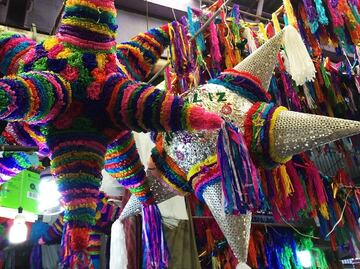Más Información

Sheinbaum designa a Lázaro Cárdenas Batel para nueva Comisión en la Mixteca; atenderá a pueblos originarios

"Soy inocente", reitera Garduño tras suspensión a proceso por incendio en Ciudad Juárez; trabaja con víctimas, afirma

ONU llama a investigar asesinato del periodista Alejandro Gallegos en Tabasco; “nos solidarizamos con su familia”, dice
Mexico
is a country where multiple traditions and cultures have merged. In the case of Christmas , it is a celebration that resulted from the syncretism between Indigenous and European elements , which have one aim: to celebrate with the loved ones.
If you have ever wondered how Mexicans celebrate Christmas , you will be surprised. In Mexico , the majority of people start celebrating the holidays from December 12 and until January 6 , the so-called Guadalupe-Reyes marathon .
On December 12, Catholics celebrate the Virgin of Guadalup e, which is followed by series of parties, called posadas , from December 16 to 24; then Christmas dinner takes place on December 24, New Year on December 31, and the Three Kings Day on January 8.
Christmas in Mexico
Historian Amparo Rincón Pérez
explains that Spanish colonizers looked for different ways to promote Christmas among Indigenous communities .
In 1587 , evangelists started with the representation of the birth of Jesus Christ through nativity plays . This was later represented in the now popular nativity figures that people place under their Christmas trees . On the other hand, in Mexico , nativity plays started in the 17th century.
Mexican Posadas
One century later, Mexicans started to celebrate posadas . These 9 celebrations take place between December 16-24 . They are 9 parties because they represent the Virgin Mary 's 9 months of pregnancy . They are also a representation of Mary and Josep h's quest to find shelter while they awaited the birth of Jesus .
In rural communities and more traditional neighborhoods, people chose 9 neighbors, who will host the posada at their home. They will have to welcome the pilgrims with beverage and food , while they pilgrims sing and pray outside the home.
Posadas
, as we know them in Mexico , originated in the San Agustín de Acolman Convent located in the state of Mexico, at the end of the 16th century . There, Augustinian Fray Diego Soria received a permit from Pope Sixtus V to carry out nine masses before Christmas , as a symbol of the 9 months of pregnancy of Virgin Mary and the same number of days it took Mary and Joseph to travel from Nazareth to Bethlehem .

In order to make these masses more attractive and fun, at the end of it, friars gave people fruits and candy , known as aguinaldos . Years later, piñatas were incorporated. And although posadas originated as a religious celebration that took place inside churches, it is now a celebration that takes place at home.
So from December 16 to 24 , Mexican families gather to sign Litanies , Christmas carols , break piñatas , eat delicious Mexican food , and drink ponche .
Moreover, one of the most important elements is the traditional piñata , which resembles a star. During the posadas , children and adults hit and break the piñata, which represents the 7 deadly sins .
“It is broken with while blindfolded because faith is blind and it is broken because it symbolizes the destruction of evil . By destroying the evil, there is a reward,” the historian said.
gm






